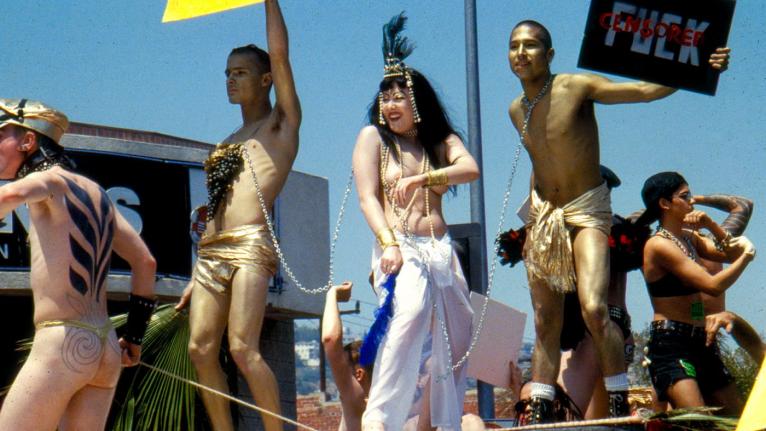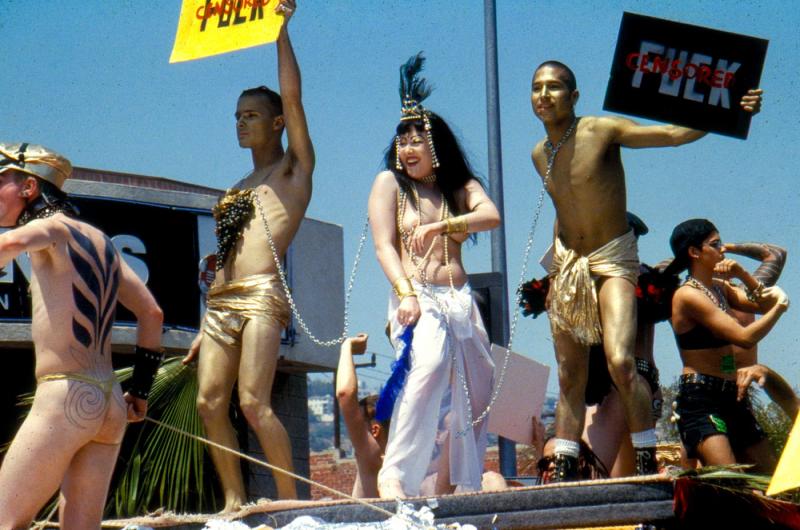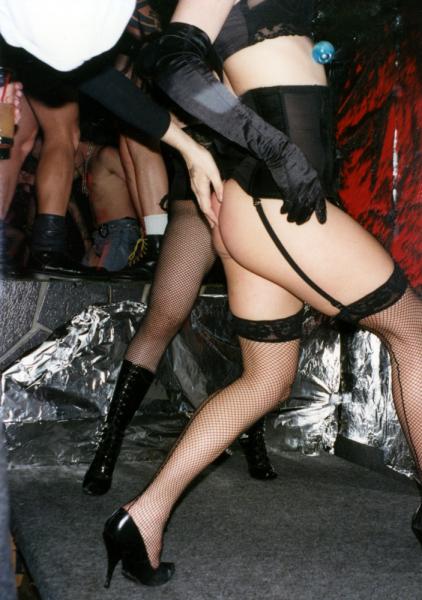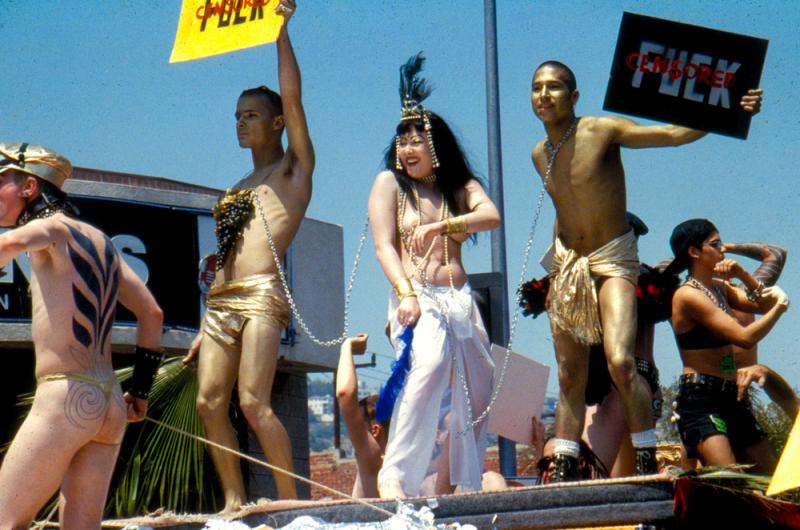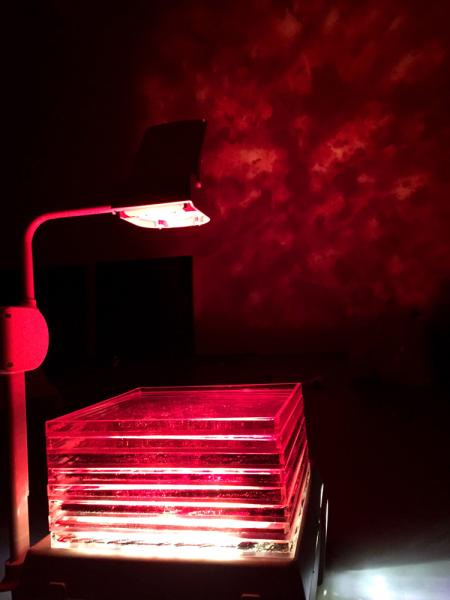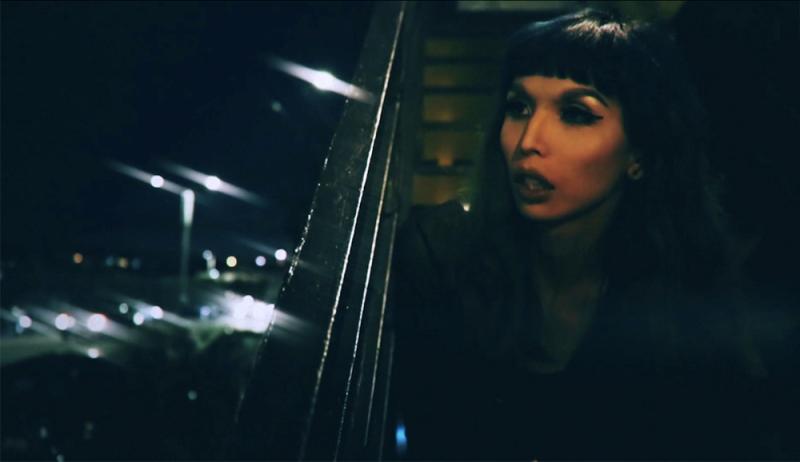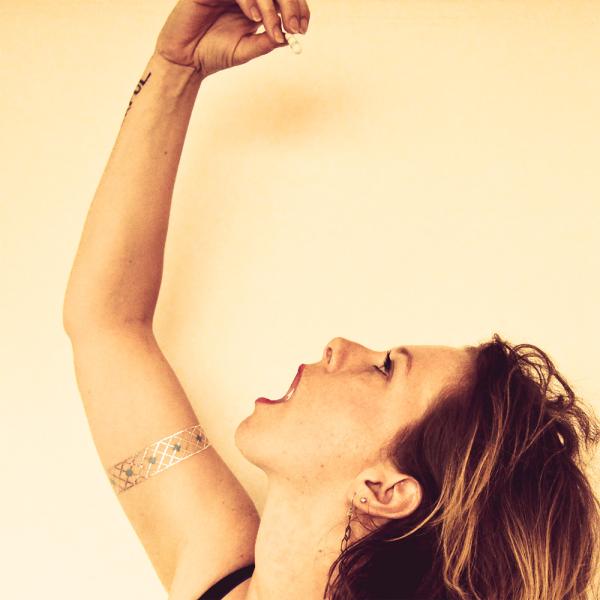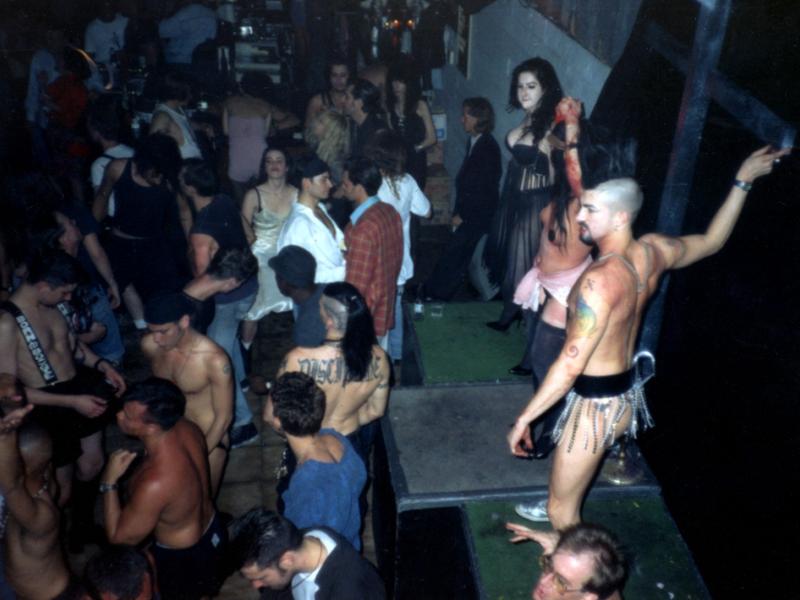Full exhibition on view January 29 – March 19, 2016
Partially on view through July 30, 2016
Please note that the archival materials related to FUCK! that will remain on view are installed around the second story mezzanine and are only accessible via stairs.
Find information on a reception and performance in conjunction with “Live Artists Live” below.
The nightclub known as FUCK! ran from the summer of 1989 until spring 1993, when it was raided by the Los Angeles Police Department’s Vice Division. First hosted by Basgo’s Disco in Silver Lake, FUCK! constituted a gritty liminal space oppositional to both the neighborhood’s largely men-only leather bars as well as the clean-cut bars of West Hollywood. At FUCK! the modified, pierced, and tattooed body was front and center. Scarring, mummification, and piercing were staples at FUCK!, confronting fears of contagion while revealing the temporality of the body during the height of the AIDS crisis. Performances at FUCK! were both transgressive and theatrical, pushing the limits of what the performer’s body (and audience) could endure with a spirit of play.
Collective rage about governmental indifference to AIDS manifested an urgency and intensity that pushed the boundaries of art, performance, and community at FUCK! A response to the unacknowledged trauma from the sudden and continual loss of largely young men and artists, FUCK! brought together a highly diverse spectrum of sexualities and people—punks, outcasts, and the art-damaged—to dance and perform to the soundtrack of industrial music. FUCK! was a key site of the alternative art and performance scene in Los Angeles at the time, blurring nightlife, performance, and activism. The club popularized a S&M, piercing, and body-modification-informed aesthetic (now prevalent in mainstream popular culture) that influenced artists of the time and the present, and that only recently has begun to be recognized.
FUCK! Loss, desire, pleasure resurrects FUCK!’s historical legacy, placing archival material related to the club in relation to works by contemporary artists whose practices align with emergent themes of the club. Historical photographs, flyers, and objects from FUCK! punctuate the club’s importance as a space of community, friendship, and playful experimentation. The exhibition includes candid snapshots and ephemera from the club, documentation of FUCK!’s intervention in the 1991 Christopher Street West pride parade, and documentation related to the LAPD raid on FUCK! in April 1993, among other highlighted events.
Contemporary works include Jordan Eagles’ Blood Illuminations, a room-sized projection of blood from nine gay men collected in protest of the FDA ban on blood from men who have sex with men; Siobhan Hebron’s Chemoglam series, interrogating culturally accepted representations of female beauty and the sociocultural aspects of illness; Young Joon Kwak’s artist book Aggregate Body, which abstracts the messy corporeality of the body by playing with gender, pain, and pleasure; Dominic Quagliozzi’s Bodies Are Not Archival, highlighting the temporality of the body; and a performance by Daphne Von Rey, which makes use of the artist’s own corpus as a medium through piercing and body modification.
FUCK! cannot be recalled without accessing nostalgia, excitement, and for most, the profound loss of close and familial friendships. This exhibition is an invitation to future researchers to utilize information collected through oral documentation so as to further theorize the importance of FUCK! We would like to thank Kelly B., Race Bannon, Richard Benzing, Carla Bozulich, Michelle Carr, Bud Cockerham, Clay Cross, Divinity Fudge, Teri Geary, Stephen Holman, Paul King, Pigpen, Frankie MacTavish, Sweet P., Mike Pierce, Rush Riddle, Sheree Rose, Bhaskar Sarkar, Steak, Stuart Swezey, Bud Thomas, Valerie Vaughan, Ruth Villasenor, and all those who have contributed not only their time and energy, but also their personal items, tales, and insights to assist in retelling this history.
